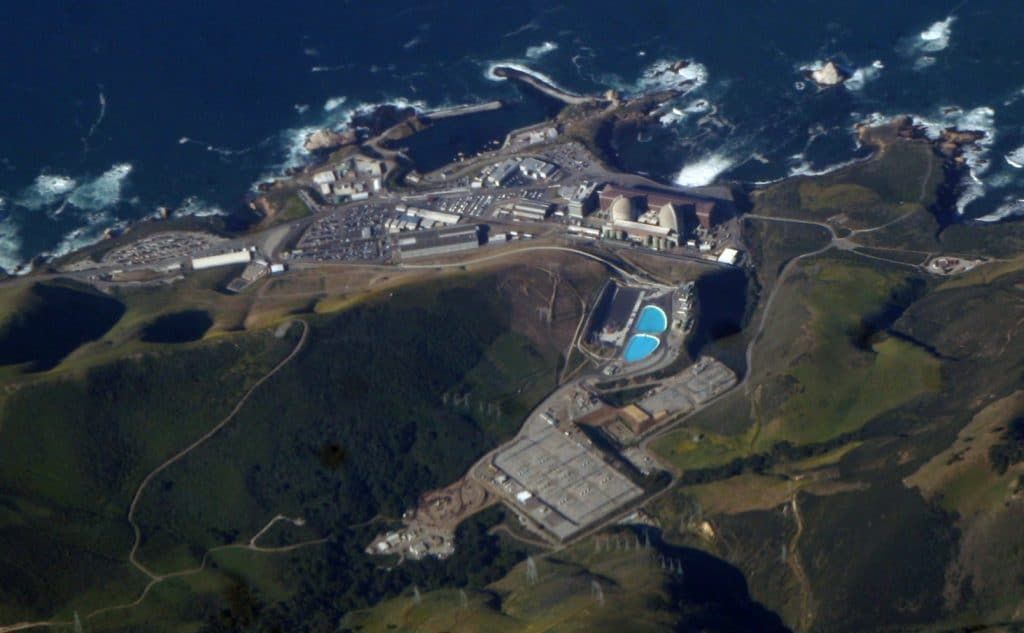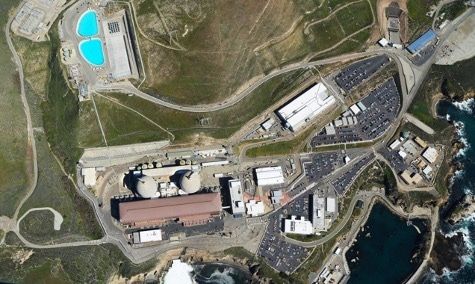Why the retirement of a California nuclear plant should proceed as planned
By Ralph Cavanagh | March 10, 2022
 Diablo Canyon Power Plant, on the coast of California. Photo by: Doc Searls (CC BY-SA 2.0)
Diablo Canyon Power Plant, on the coast of California. Photo by: Doc Searls (CC BY-SA 2.0)
Since 1979, when I first joined the Natural Resources Defense Council, I have been involved with nuclear power issues touching on all aspects of the technology’s deployment in the United States. Thirty years ago, I served on a National Academy of Sciences panel convened to address the nuclear industry’s future, and in 2016 I helped negotiate the agreement that extended the lifetime of the Diablo Canyon nuclear power plant to ensure time for zero-carbon replacement. Nuclear power is certainly better than fossil generation, avoiding its carbon and particulate pollution (although no one should ignore the public health and environmental concerns associated with the nuclear fuel cycle’s waste disposal, mining, and weapons proliferation issues). But those aren’t our only choices, and Diablo Canyon is an instructive case study.
In June 2016, the Natural Resources Defense Council announced that it and several other environmental groups would support a seven-year extension of the cooling water permit for the Pacific Gas & Electric Company’s Diablo Canyon nuclear power plant, from 2018 through 2025. For its part, PG&E committed to seeking permission to replace the California plant’s two generating units by 2025 with a portfolio of lower-cost, zero-carbon resources, led by energy efficiency and renewable energy. PG&E is one of the nation’s largest combination natural gas and electric utilities, serving 16 million people in northern and central California across a region the size of Florida.
Under the Joint Proposal to Retire and Replace Diablo Canyon, the state’s last remaining nuclear plant would get a state cooling water permit renewal allowing it to operate until the expiration of its federal operating license in August 2025 (barring unanticipated equipment failures or operational safety issues). Attesting its fair treatment for the plant’s host communities and workers, the proposal had strong support from those communities and PG&E’s principal union, IBEW 1245. In a bill co-authored by Senate Majority leader Bill Monning, adopted almost unanimously in 2018 and signed by then-Governor Jerry Brown, California’s legislature endorsed the Joint Proposal and directed the California PUC to execute it fully, including a mandate to “avoid any increase in emissions of greenhouse gases as a result of the retirement of the Diablo Canyon Units.” That process is now well underway, with recently renewed endorsements by both the plant’s hometown paper (the San Luis Obispo Tribune) and the Los Angeles Times.
The orderly phase-out of Diablo Canyon is historic in important ways. It is the first nuclear power plant life extension and retirement to be conditioned on full replacement with lower cost zero-carbon resources. It reflected specific findings by the plant owner that giant “baseload” power plants no longer fit the needs of modern power grids, which require greater flexibility and resilience. For example, California increasingly must throw away solar energy at times of high production because it exceeds customers’ electricity needs. Under these circumstances, a giant baseload nuclear plant that is designed to operate around-the-clock had become a roadblock to replacing polluting power plants with emissions-free renewable energy.

Nonetheless, a February 2022 letter to California Gov. Gavin Newsom signed by prominent academics and others urged further extension of the Diablo Canyon nuclear power plant’s operating life, shortly after Stanford and MIT researchers released a report with the same recommendation. Both assumed inaccurately that running Diablo Canyon after its operating license expires in 2025 would cost much less than zero-carbon alternatives. Both included other significant errors and omissions, reflecting in part the authors’ failure to consult with any of the numerous parties to the Joint Proposal.
The letter’s supposedly “new” arguments for life extension were considered and rejected repeatedly in public proceedings before both state and federal decision-makers between 2016 and 2021. The signers likely don’t know that and haven’t reviewed the replacement plan, and NRDC hopes they will join us and others in supporting much more affordable and practicable approaches to decarbonizing California’s economy. We all share that crucial objective, and this disagreement involves only one of numerous potential solutions.
The letter to Newsom is premised on the false notion that Diablo Canyon is being “prematurely shut down;” in fact, the Diablo plant is expected to operate through August of 2025, which marks the end of its 40-year federal license. The letter concedes that California law requires that Diablo Canyon be replaced without triggering any increases in emissions of greenhouse gases or other pollutants. The letter also acknowledges that the California Public Utilities Commission (CPUC) has recently issued a comprehensive procurement order establishing a detailed implementation plan to ensure compliance with the state mandate. A diverse portfolio of zero-emission resources will replace Diablo Canyon at significantly lower cost than refurbishing it to run longer. And total carbon pollution from power generation serving California is subject to declining caps that the CPUC strengthened recently.
The letter mistakenly equates California’s San Onofre and Diablo nuclear plant retirements, arguing that because San Onofre’s closure in 2013 triggered additional fossil fuel generation, Diablo Canyon’s retirement will have the same result. But San Onofre closed unexpectedly following massive equipment failures, with no opportunity to plan for long-term zero-carbon replacements. By contrast, the 2016 Diablo Canyon agreement left nine years for remedial action, which is now underway, overseen by the Public Utilities Commission.
For its part, the MIT/Stanford report rests on two palpably flawed assumptions: (1) Diablo Canyon’s retirement will be both costly and environmentally damaging because of heavy reliance on natural gas generation in the replacement portfolio, and (2) Diablo Canyon’s operating life can be extended inexpensively for decades with relatively minor modifications to its cooling system, which relies on massive seawater intake that significantly harms marine life. But it was clear to all involved in the Joint Proposal that California regulators would never tolerate continued operation of an ocean cooling system in any way similar to that described in the Stanford/MIT report. PG&E would have been required instead to install a far more costly cooling tower alternative, pushing Diablo Canyon’s long-term operating costs far beyond the Stanford/MIT projection (which implausibly anticipated at most trivial increases in today’s costs for decades to come).
As to the issue of replacement power, as noted above, the California legislature has ruled out the report’s natural gas-dominated replacement scenario. The 2018 bill required that Diablo Canyon be replaced without triggering any increases in emissions of greenhouse gases. The 2016 Joint Proposal itself was based in substantial part on expert analysis (overlooked by the Stanford/MIT researchers) showing that replacing Diablo Canyon with a diverse mix of energy efficiency, renewable resources and electricity storage options would be far less costly than continuing to operate a giant, inflexible plant past 2025.
Most of the claims in the Stanford/MIT report and the letter to the governor have been litigated unsuccessfully before the CPUC, the California Court of Appeal, and most recently—in March 2021—the Federal Energy Regulatory Commission. Diablo Canyon’s owner, PG&E, has withdrawn and will not renew its application to the federal Nuclear Regulatory Commission to extend the plant’s 40-year federal operating license. Diablo Canyon will retire when the license expires in August 2025. Governor Newsom, who as a member of the State Lands Commission provided a key vote in favor of the Joint Proposal back in 2016, has no legal authority to extend that deadline.
Shortly before Governor Newsom cast that vote, the New York Times published an editorial strongly in favor of the Diablo Canyon retirement proposal, calling it “a positive example for other states and nations that may in time need to replace aging nuclear plants.” It was indeed, and always will be.
Together, we make the world safer.
The Bulletin elevates expert voices above the noise. But as an independent nonprofit organization, our operations depend on the support of readers like you. Help us continue to deliver quality journalism that holds leaders accountable. Your support of our work at any level is important. In return, we promise our coverage will be understandable, influential, vigilant, solution-oriented, and fair-minded. Together we can make a difference.
Keywords: California, diablo canyon, energy transition, nuclear energy, nuclear power plant, zero-carbon transition
Topics: Climate Change, Nuclear Energy
















The mistake you are making is assuming the cooling system needs to be augmented. The choice is actually about continuing to accept a small degradation in the immediate ocean environment for continuing to maintain a large source of low-carbon emission power.
It’s not even a degradation to the marine environment- because the sea around the plant is off-limits to boats, it actually functions as a marine preserve. Turns out commercial fishing is more harmful to marine life than localized emissions of water that is around 20 degrees Fahrenheit warmer. Many fish, including Great White sharks, are actually thriving in the area off Diablo Canyon. Unfortunately, if the plant is closed, it may take the accidental sanctuary with it. https://twitter.com/ParisOrtizWines/status/1506347031995957249
One more reason to proceed with shutdown is cancer risk to local residents, as Diablo Canyon releases radioactivity into the air and water. According to CDC data, in the 1970s, before the plant began operations, San Luis Obispo County’s cancer death rate was 14% below California’s. But since startup, the county was just 2% lower. And most recently (2018-2020), it was 1.5% higher. A low-cancer area is now a high-cancer area. Keeping aging and corroding reactors running is bad for public health.
When the NRDC stops taking fossil fuel money, that is the day I give any credence to what their schills have to say, until then,this person has every incentive to shut down the biggest source of carbon free energy in California – and replace it with GAS, just as his funders want.
Nothing can be farther from the truth! It is imperative that this vital source of clean and carbon-free power be allowed to operate for as long as possible, perhaps for another 40 years. It should be a given a free pass on the use of its cooling water, and be “grand-fathered in” to continue operating, as it has always been. No new costs should be imposed upon its operator. It is also interesting to note that large amounts of replacement power will come from “unspecified imports” after Diablo Canyon closes. These “unspecified imports” are a legal euphemism devised by the CPUC for carbon-heavy, coal-fired power… Read more »